 advertisements advertisements
|

|
History-making SpaceX booster mostly destroyed in post-flight topple
December 26, 2023 — The first U.S. commercial rocket to launch astronauts into orbit has met its end after being destroyed during its latest post-flight recovery.
Referred to by SpaceX by its serial number, B1058, the Falcon 9 first stage was being transported back to shore after its record-setting 19th flight when "the booster tipped over "due to high winds and waves," the company reported on X, the social network previously known as Twitter, on Sunday (Dec. 25). Two days earlier, the stage had helped launch 23 of SpaceX's Starlink broadband satellites before successfully touching down on the company's droneship "Just Read the Instructions," which was stationed in the Atlantic Ocean, off the coast of Florida.
Photos shared online of the returning ship revealed that only the lower segment of B1058 remained, with three of its four landing legs still deployed and all nine of its Merlin engines still intact.
"We are planning to salvage the engines and do life leader inspections on the remaining hardware. There is still quite a bit of value in this booster. We will not let it go to waste," wrote Jon Edwards, SpaceX's vice president of Falcon launch vehicles, on X on Tuesday (Dec. 26).
Lost with the upper segment of B1058 was a unique, tell-tale marking that it had been used to launch the first astronauts for NASA. The booster was the only stage in SpaceX's fleet to be adorned with the space agency's "worm" logotype.
On May 30, 2020, B1058 lifted off for the first time on SpaceX's Demo-2 (DM-2) mission carrying NASA astronauts Bob Behnken and Doug Hurley aboard the company's Crew Dragon capsule "Endeavour." The two-month long mission to the International Space Station was the first to launch American astronauts from the United States since the end of NASA's space shuttle program in 2011.
Since that flight, B1058 was used in the launch of SpaceX's 21st cargo delivery to the space station (CRS-21), a dedicated satellite launch for South Korea (ANASIS-II), two shared ride satellite launches (Transporter-1 and Transporter-3) and 14 Starlink missions. The stage, like the other "Block 5" boosters in SpaceX's fleet, had been certified for 20 launches.
"This one reusable rocket booster alone launched to orbit two astronauts and more than 860 satellites, totaling 260+ metric tons, in about 3.5 years," SpaceX posted on X.
Other Falcon 9 first stages might have survived the rough sea conditions given improvements made to their landing legs.
"We came up with self leveling legs that immediately equalize leg loads on landing after experiencing a severe tippy booster two years ago on Christmas," wrote Kiko Dontchev, SpaceX's vice president of launch, on X. "The fleet is mostly outfitted, but 1058, given its age, was not. It met its fate when it hit intense wind and waves resulting in failure of a partially secured OG ["octograbber" hold-down clamp] less than 100 miles [160 kilometers] from home."
"One thing is for sure we will make lemonade out of lemons and learn as much as possible from historic 1058 on our path to aircraft like operations," he wrote.
With the loss of 1058, SpaceX is believed to have 16 flight-proven, active Falcon 9 first stages still remaining and three pending their first use.
Fans of the company reacted to the news of 1058's destruction with regrets that it had not made it into the Smithsonian or another museum to be preserved.
To date, SpaceX has retired four of its earlier-flown Falcon 9 stages for public display. B1019, the first to return to its launch site for a successful landing, today stands outside the company's headquarters in Hawthorne, California. B1035, which launched two Dragon cargo missions to the International Space Station, is now exhibited on its side at Space Center Houston in Texas.
B1023, which helped launch Elon Musk's Tesla Roadster into space as a side booster on the first Falcon Heavy rocket launch, is now a part of "Gateway: The Deep Space Launch Complex" attraction at the Kennedy Space Center Visitor Complex in Florida. And B1021, the first booster to be re-flown and the first to land on a droneship, was just recently installed outside Dish Network's headquarters in Littleton, Colorado. |
|
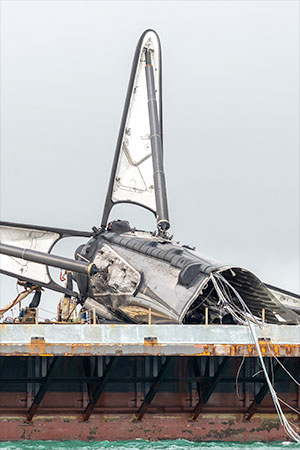
The remains of SpaceX's first Falcon booster to fly astronauts into orbit are seen atop the droneship "Just Read the Instructions" after a mishap following the stage's record 19th launch. (Sean Cannon)
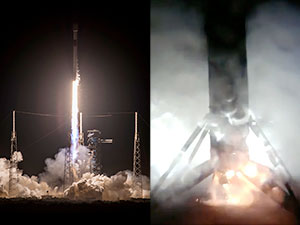
SpaceX's Falcon 9 first stage B1058 is seen launching (at left) and landing on Dec. 23, 2023, completing its 19th re-flight. (SpaceX)
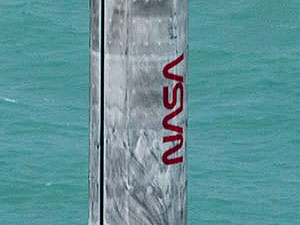
Seen after landing from its first flight in 2020, B1058 was the only Falcon 9 first stage to be adorned with the NASA "worm." (SpaceX) |
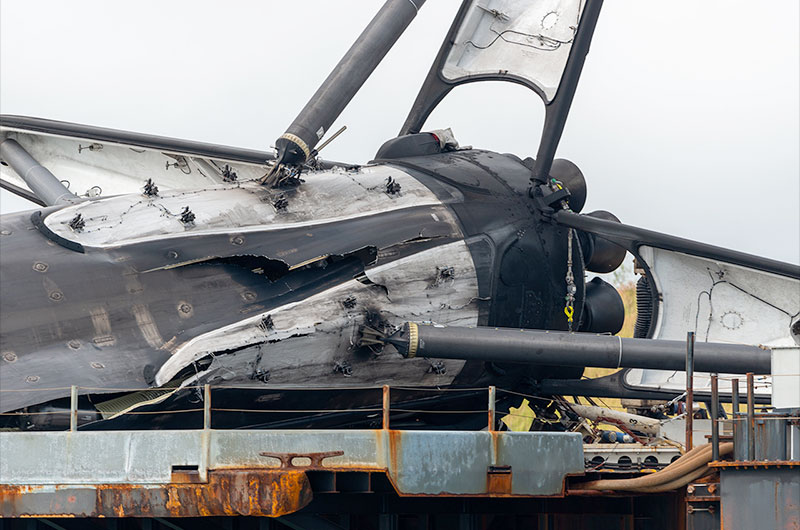
SpaceX plans to salvage the nine Merlin engines from what remains of its first Falcon 9 booster to fly 19 times, including the company's first flight with astronauts aboard. Seen here, the wreckage atop the droneship "Just Read the Instructions" on Tuesday, Dec. 26, 2023. (Sean Cannon) |
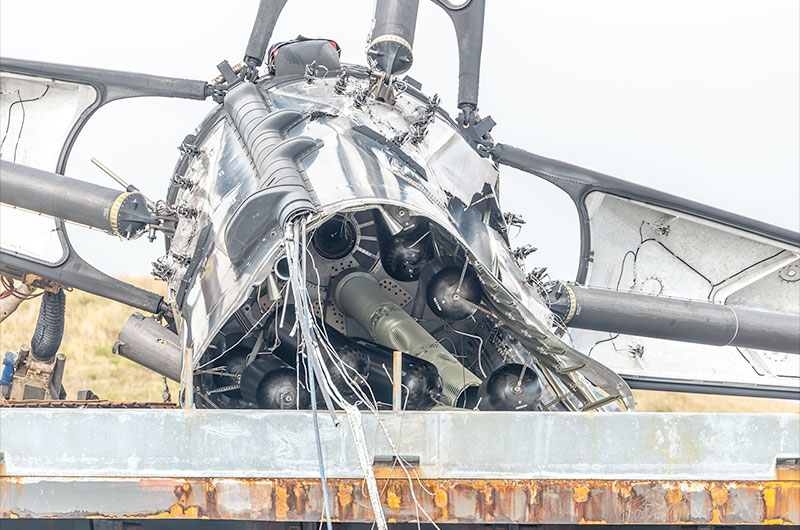
A rare look at the inside of a SpaceX Falcon 9 rocket as a result of the damage caused when the stage toppled over during recovery. (Sean Cannon) |
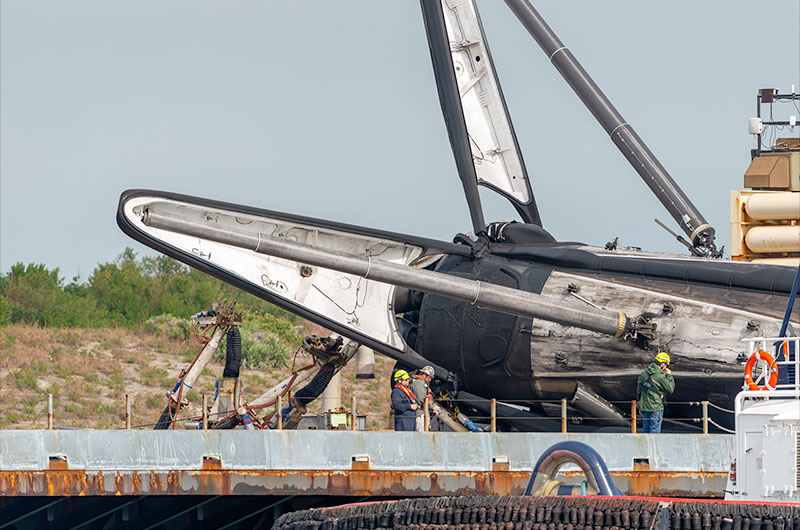
SpaceX recovery team members offer a sense of scale for the remaining wreckage the Falcon 9 first stage B1058 on Dec. 26, 2023. (Sean Cannon) |
|

© collectSPACE. All rights reserved.
|
|

|

|
